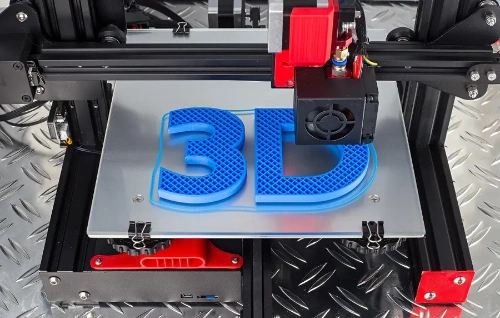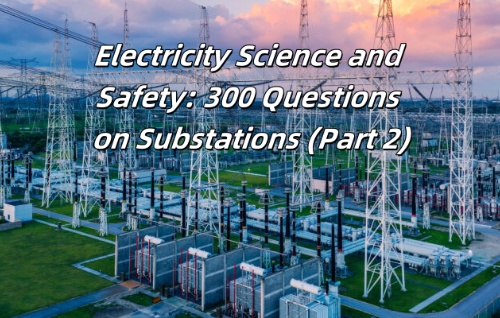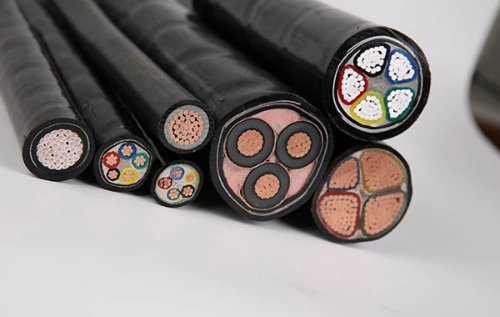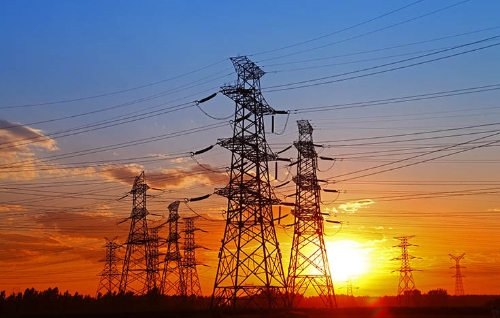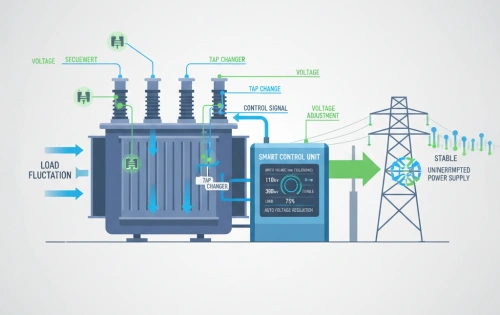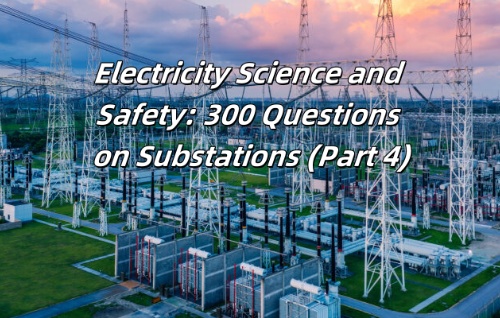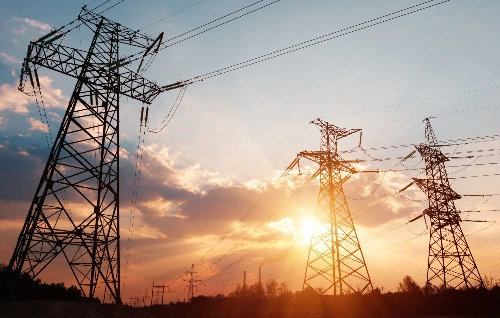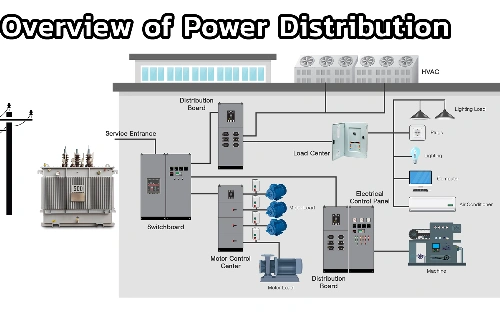Evaluation of Iron and Copper Losses in Transformers
Any electrical equipment will experience losses during prolonged operation, and power transformers are no exception. The losses in power transformers are mainly divided into two parts: copper loss and iron loss.
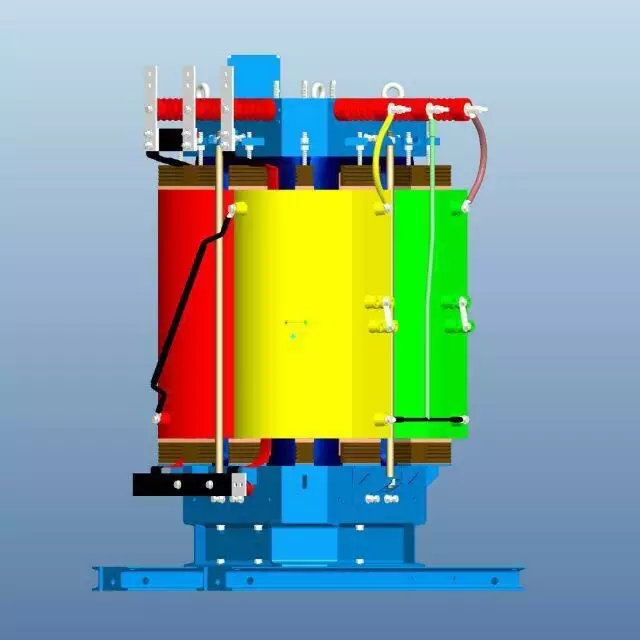
Copper Loss
What is the Copper Loss
Copper plays an important role in transformers, as the windings typically use copper conductors. The "copper loss" in transformers refers to the losses generated by these copper conductors. Copper loss is also known as load loss, which is a variable loss that changes with operating conditions.
When a transformer operates under load, the current passing through the conductors encounters resistance, generating resistive losses. According to Joule's Law, this resistance generates Joule heat when current flows through it, and the higher the current, the greater the power loss. Thus, resistive losses are proportional to the square of the current and independent of voltage. Since copper loss varies with current magnitude, it is a variable loss and constitutes the primary loss during transformer operation.
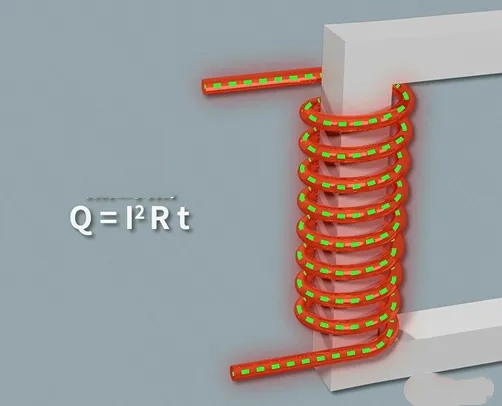
Copper Loss Influencing Factors
- Current Magnitude: As mentioned, copper loss is proportional to the square of the current, making current magnitude a key factor.
- Winding Resistance: The resistance of the windings directly affects copper loss. Higher resistance leads to higher copper loss.
- Number of Coil Layers: More layers increase the path length for current flow in the windings, raising resistance and thus copper loss.
- Switching Frequency: The impact of switching frequency on copper loss is related to the transformer's distributed parameters and load characteristics. When the load characteristics and distributed parameters exhibit inductive behavior, copper loss decreases with increasing switching frequency; when they exhibit capacitive behavior, copper loss increases with frequency.
- Temperature Effects: Load losses are also influenced by transformer temperature. Additionally, leakage flux caused by load current generates eddy current losses within the windings and stray losses in the external metal parts.
Calculation Methods
There are two calculation formulas:
- Based on Rated Current and Resistance: Copper Loss (kW) = I² × Rc × Δt
Where:
- I: Rated current of the transformer.
- Rc: Resistance of the copper conductors.
- Δt: Operating time of the transformer.
- Based on Rated Current and Total Copper Resistance: Copper Loss = I² × R
Where:
- I: Rated current of the transformer.
- R: Total copper resistance of the transformer.
The total copper resistance R can be calculated as: R = (R1 + R2) / 2
Where:
- R1: Copper resistance of the primary side.
- R2: Copper resistance of the secondary side.
Methods to Reduce Copper Loss
- Increase Winding Cross-Sectional Area: Reduces conductor resistance, thereby lowering copper losses.
- Use High-Quality Conductor Materials: Such as copper foil or aluminum foil, to reduce winding resistance.
- Limit Light Load Operation Time: Reducing the proportion of light load operation helps lower copper losses.
Iron Loss
What is the Iron Loss
Unlike copper loss, iron loss is unrelated to windings or current magnitude. As the name suggests, iron loss is associated with the iron core. It is also called "no-load loss" because it exists regardless of whether the transformer is fully loaded or unloaded, making it a fixed loss. However, under load conditions, power loss decreases as electric field strength diminishes.
types of Iron Loss
Iron loss is divided into hysteresis loss and eddy current loss.
1. Hysteresis Loss
The working principle of transformers relies on electromagnetic induction to achieve voltage transformation and current changes. The magnetic flux in the transformer flows through the iron core, which has magnetic resistance (similar to how conductors resist current flow), generating heat. This loss is called "hysteresis loss."
2. Eddy Current Loss
When the primary winding is energized, the magnetic flux generated by the coil flows through the iron core. Since the iron core itself is conductive, an electromotive force is induced perpendicular to the magnetic flux lines, forming a closed loop on the cross-section of the core and generating current—resembling a vortex. This current-induced loss is called "eddy current loss." To minimize eddy currents, the iron core is made into thin laminations because thinner cores have higher resistance and lower current.
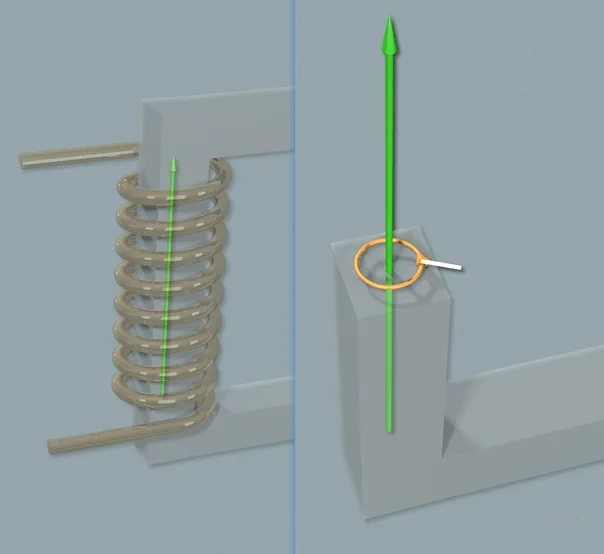
Influencing Factors
- Operating Voltage and Frequency: Iron loss is related to the transformer's operating voltage and frequency, as these factors affect the magnetic field strength and hysteresis phenomena in the core.
- Core Material: The magnetic properties of the core material influence iron loss. Poor material selection increases hysteresis loss.
- Manufacturing Process: The transformer's manufacturing process also affects iron loss. For example, lamination methods and insulation treatment impact losses.
Calculation Methods
- Based on Rated Current and Hysteresis/Resistance Losses: Iron Loss (kVA) = I² × (Rm + Ra) Where:
- I: Rated current of the transformer.
- Rm: Hysteresis loss of the core.
- Ra: Resistance loss of the core.
- Based on Constants, Flux Density, and Frequency: P_iron = Kf × (Bm)^2 × f
Where:
- P_iron: Iron loss.
- Kf: Constant.
- Bm: Magnetic flux density.
- f: Transformer operating frequency.
Reduction Methods
- Select High-Quality Core Materials: Use materials with low hysteresis loss to reduce iron losses.
- Optimize Manufacturing Processes: Improve lamination methods and insulation treatment to lower losses.
- Rational Design: Optimize structural design and parameter selection during the design phase to minimize iron loss.
Impact of Transformer Iron Loss and Copper Loss on Maintenance and Servicing
Transformer iron loss and copper loss are critical factors affecting operational efficiency and thermal performance. Iron loss, caused by hysteresis and eddy currents in the core, occurs continuously—even under no-load conditions. Copper loss, on the other hand, results from the resistance of the windings when current flows through them and increases with load.
During Transformer maintenance and servicing, abnormal iron losses may indicate issues such as core overheating, insulation degradation, or mechanical loosening of the core assembly. Excessive copper losses often suggest problems like overloading, poor electrical connections, or winding faults such as short circuits. Regular monitoring of these losses enables maintenance personnel to identify early warning signs of failure, improve load management, and extend the transformer's operational lifespan.
Targeted maintenance actions—such as tightening core clamps, cleaning corrosion, replacing aged windings, or enhancing cooling systems—based on iron and copper loss analysis can significantly improve transformer reliability and efficiency.


